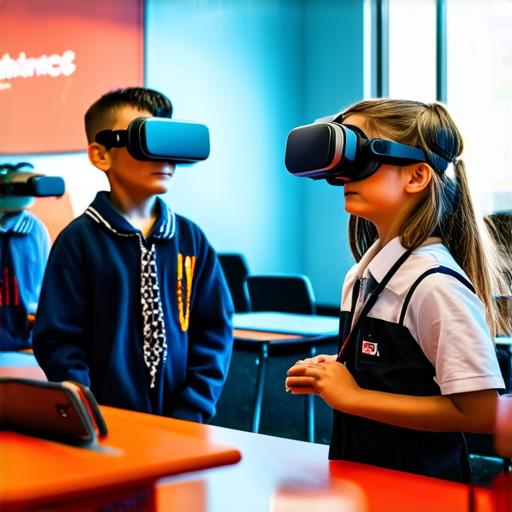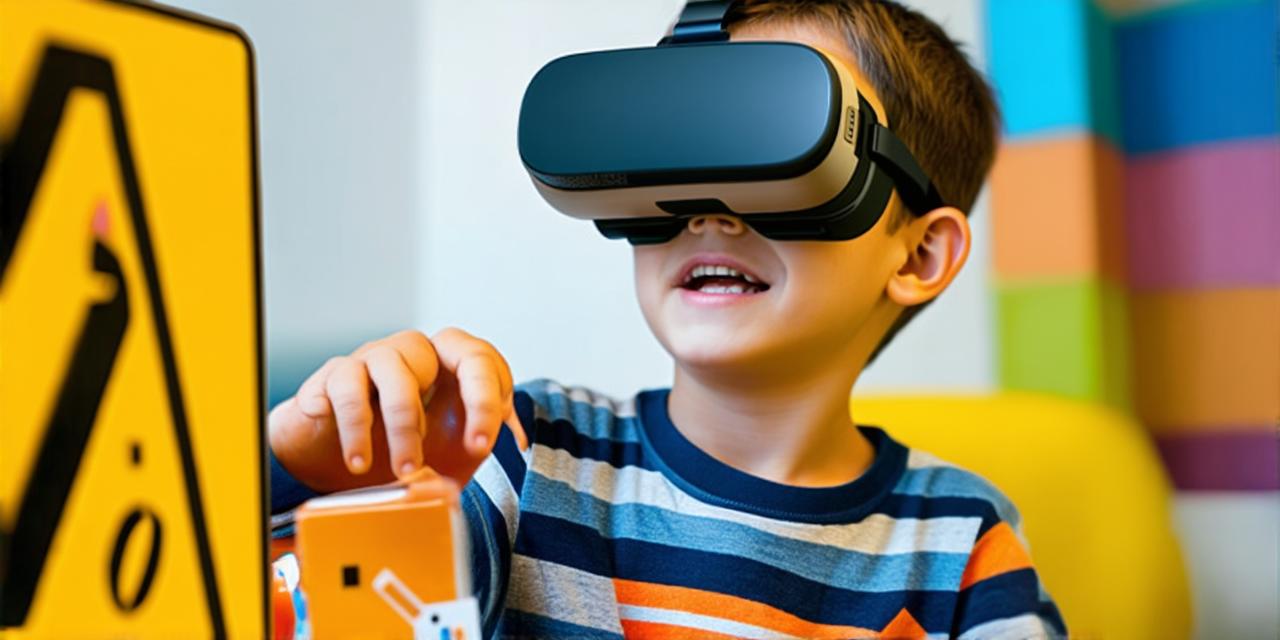Virtual reality (VR) technology is rapidly advancing and becoming more accessible to the public.
As a result, children are increasingly using VR devices to play games, learn, and explore new worlds. However, this raises questions about the safety of VR use for children. In this article, we will explore the potential risks and benefits of virtual reality for kids and discuss ways to ensure that their VR experiences are safe and enjoyable.
Potential Risks of Virtual Reality for Children
While virtual reality can be a fun and engaging experience for children, there are some potential risks that parents and caregivers should be aware of. Some of the most significant risks include:
- Motion sickness: VR devices can trigger motion sickness in some people, including children. This can cause nausea, dizziness, and headaches, which can be uncomfortable for children.
- Eye strain: Staring at a virtual screen for extended periods can lead to eye strain, dry eyes, and headaches. This can be especially problematic for children who already have poor vision or eye problems.
- Addiction: VR devices can be addictive, which can lead to negative consequences such as neglecting other responsibilities and activities.
- Social isolation: VR experiences can be isolating, as children may spend more time in virtual worlds than interacting with real people.
- Fear and anxiety: Some children may experience fear or anxiety when using VR devices, especially if they are new to the technology or if they are not well-prepared for certain experiences.
Ways to Ensure Safe Virtual Reality Use for Children
To ensure that children’s virtual reality experiences are safe and enjoyable, there are several steps parents and caregivers can take:
- Set age limits: While there is no one-size-fits-all answer to this question, it’s generally recommended that children under the age of 7 should not use VR devices unsupervised. For older children, parents can set age limits based on their child’s maturity and level of understanding.
- Monitor usage: Parents should monitor their children’s VR use to ensure that they are not spending too much time in virtual worlds or becoming overly addicted to the technology. They should also be aware of the content their children are accessing and take steps to limit exposure to inappropriate or harmful content.
- Provide eye breaks: Children should take regular breaks from using VR devices to avoid eye strain and discomfort. Parents can schedule these breaks throughout the day or encourage their children to take them as needed.
- Encourage real-world interaction: To prevent social isolation, parents should encourage their children to interact with other people in real life, whether through hobbies, sports, or other activities.
- Help children manage fear and anxiety: Parents can help children overcome fear and anxiety by gradually exposing them to new VR experiences and providing support and guidance as needed.

Benefits of Virtual Reality for Children
While there are potential risks associated with virtual reality use, there are also several benefits that can make this technology a valuable tool for children’s learning and development:
- Enhances creativity and imagination: VR devices can provide children with immersive and interactive experiences that can stimulate their creativity and imagination. This can lead to the development of new skills and ideas.
- Improves cognitive abilities: VR technology has been shown to improve cognitive abilities such as spatial reasoning, problem-solving, and memory. These skills are essential for success in many areas of life.
- Provides a safe learning environment: VR devices can be used to create simulated environments that are safe for children to explore and learn from. This can be especially useful for subjects such as history, science, and art.
- Encourages physical activity: Some VR experiences can include elements of physical activity, which can help children stay active and healthy while using the technology.
- Promotes socialization: VR devices can be used to create shared experiences that promote socialization and cooperation among children.
Case Studies: Successful Virtual Reality Use by Children
There are many examples of successful virtual reality use by children, including:
- The Virtual Field Trips program: This program uses VR technology to take students on virtual field trips to museums, historical sites, and other locations around the world. These trips can provide children with immersive learning experiences that they may not otherwise have access to.
- The Autism Virtual Reality Project: This project uses VR technology to create customized experiences for children with autism spectrum disorder (ASD). These experiences can help children with ASD develop social skills, communication abilities, and other essential life skills.
- The Virtual Reality Therapy program: This program uses VR technology to provide therapy for children with a variety of conditions, including post-traumatic stress disorder (PTSD), anxiety disorders, and phobias. By creating simulated environments that trigger these conditions, therapists can help children develop coping skills and overcome their fears in a safe and controlled setting.
